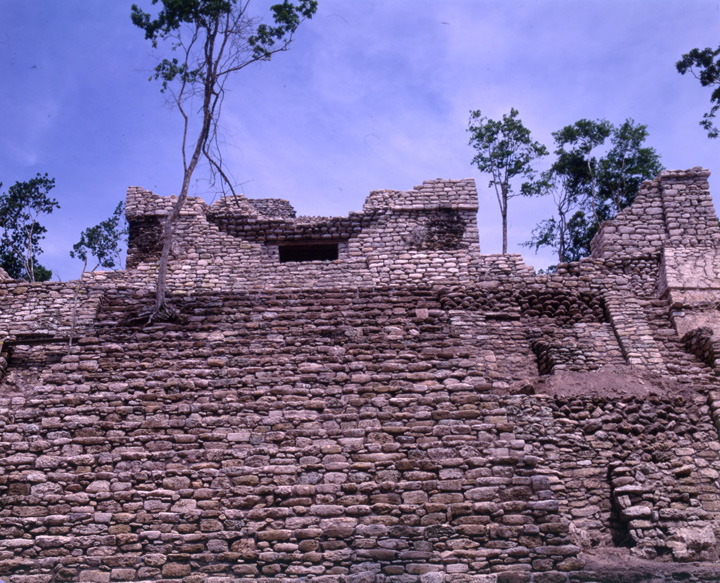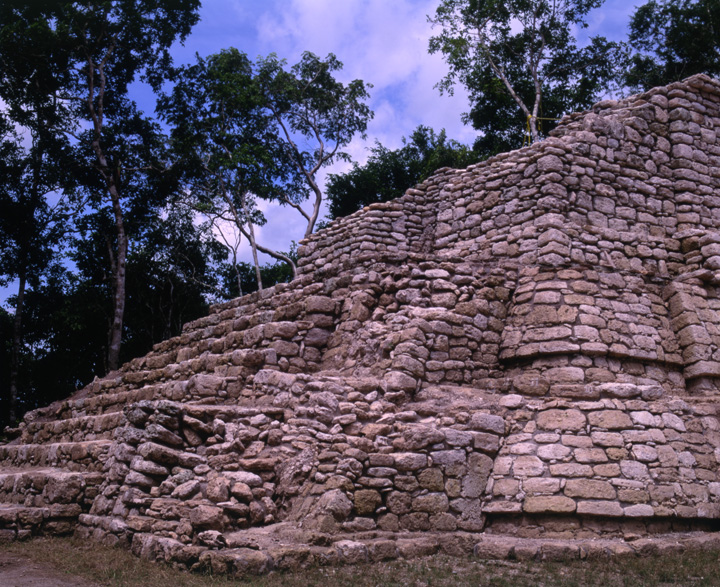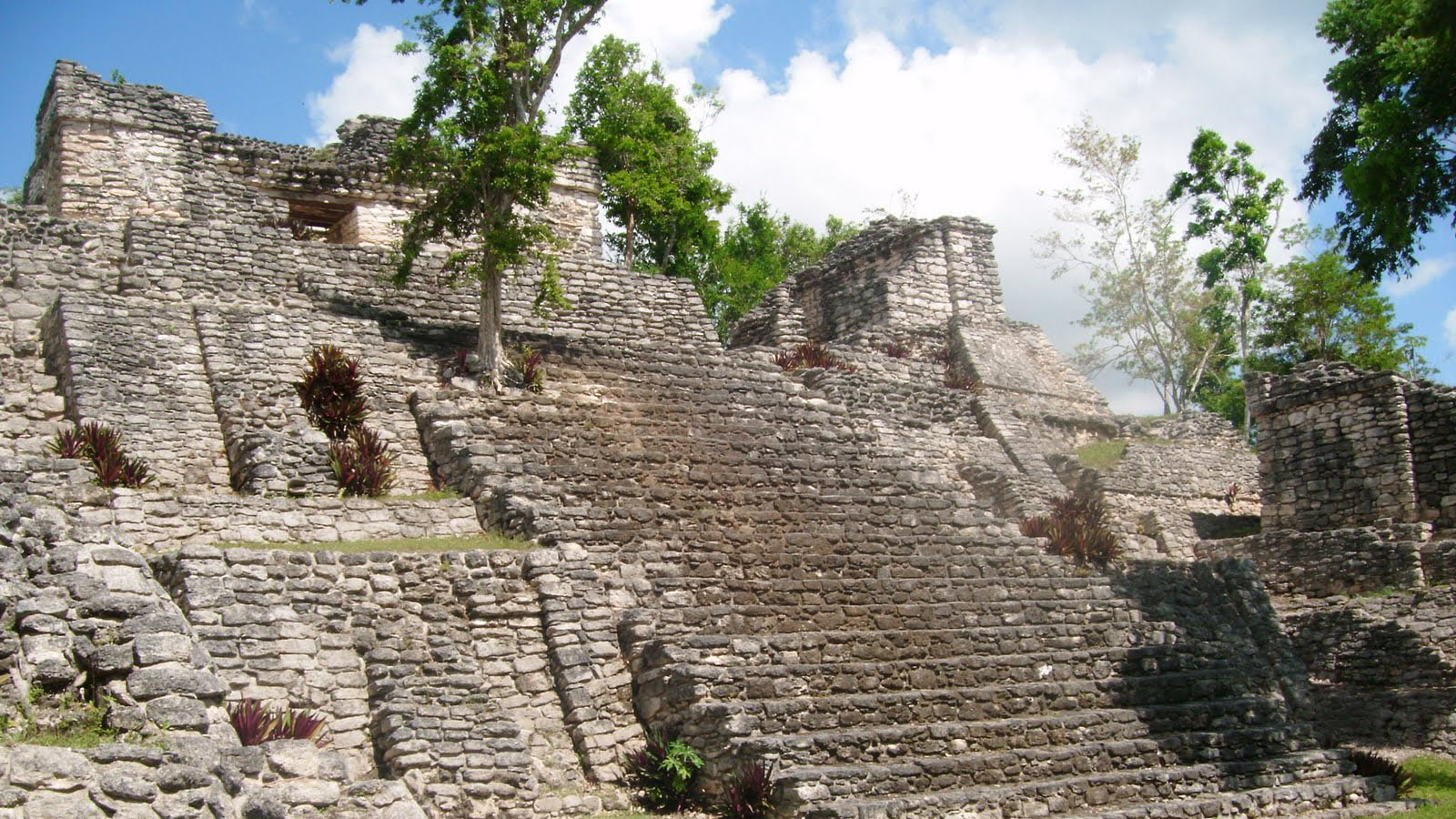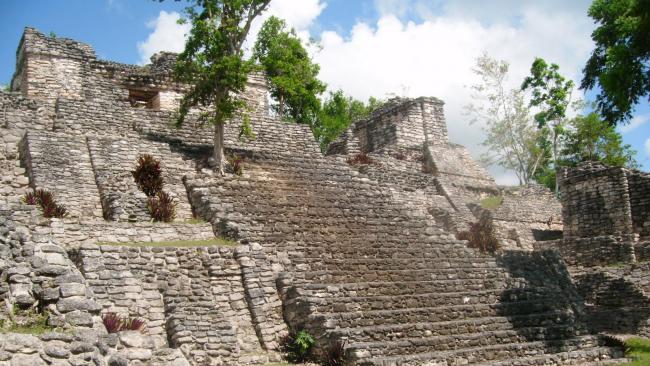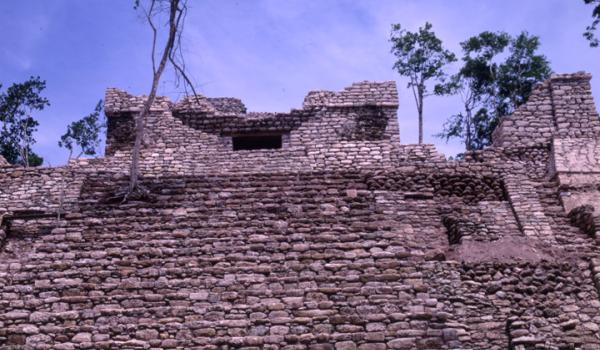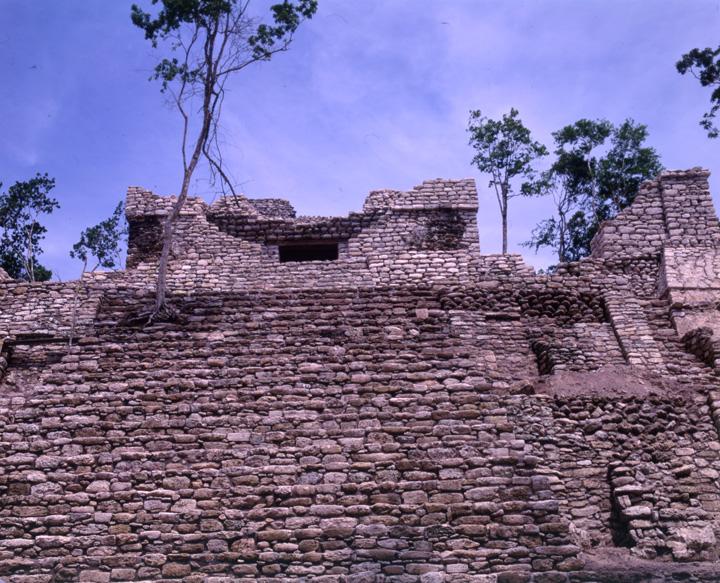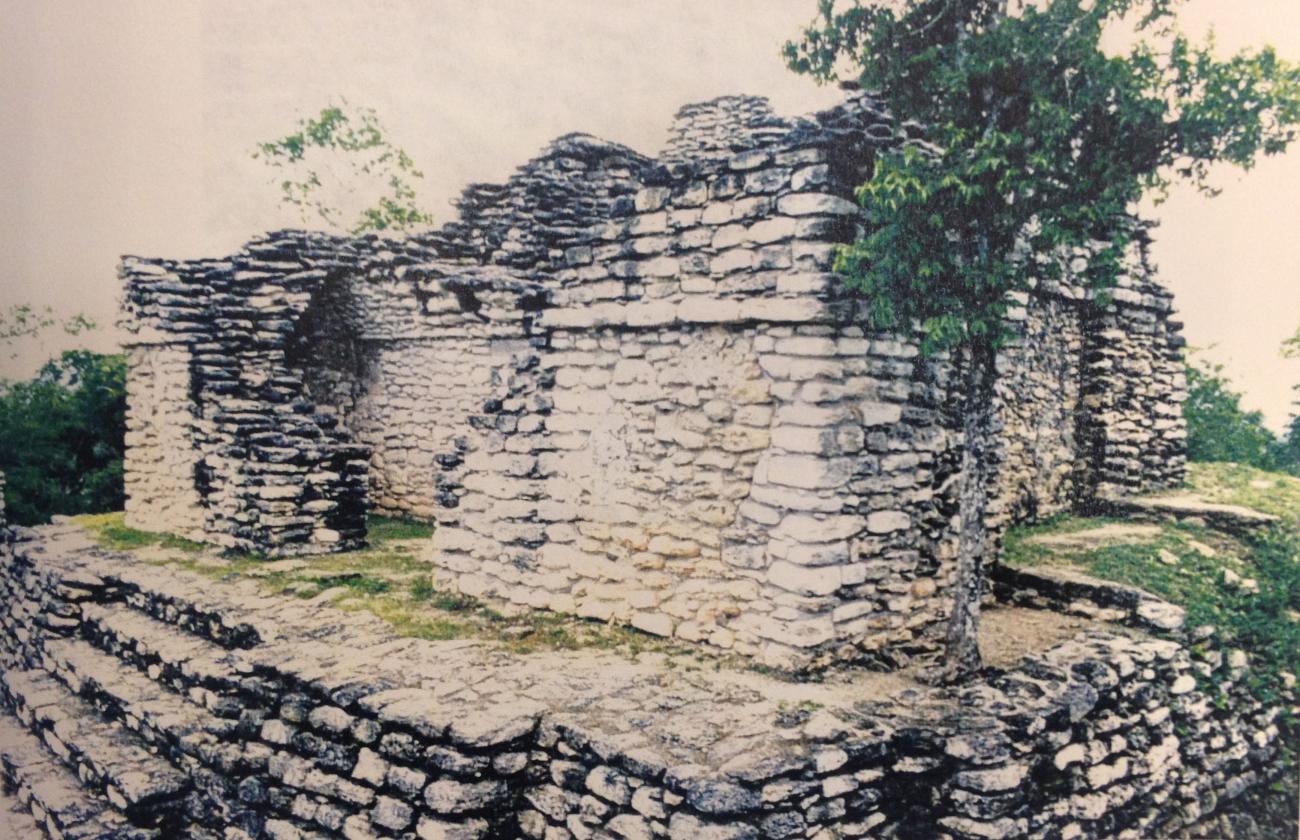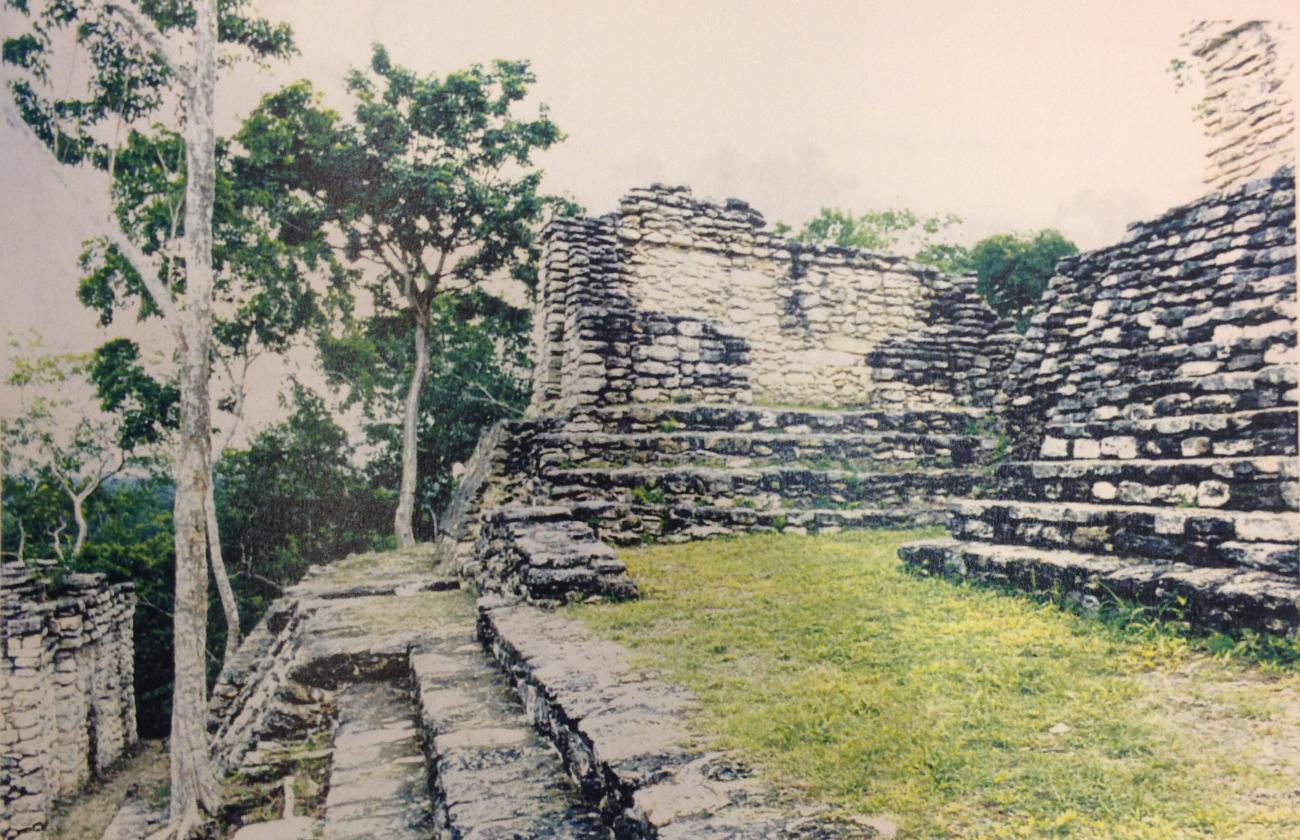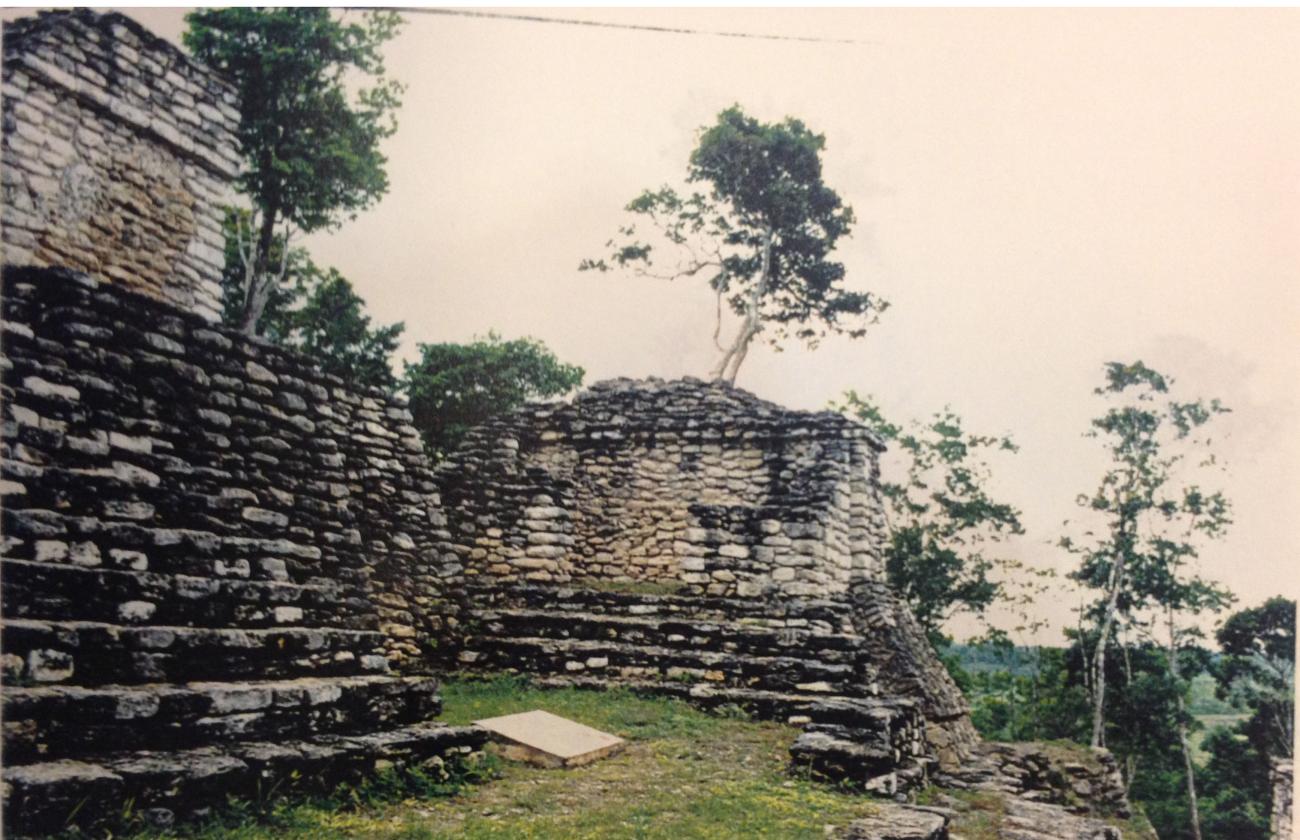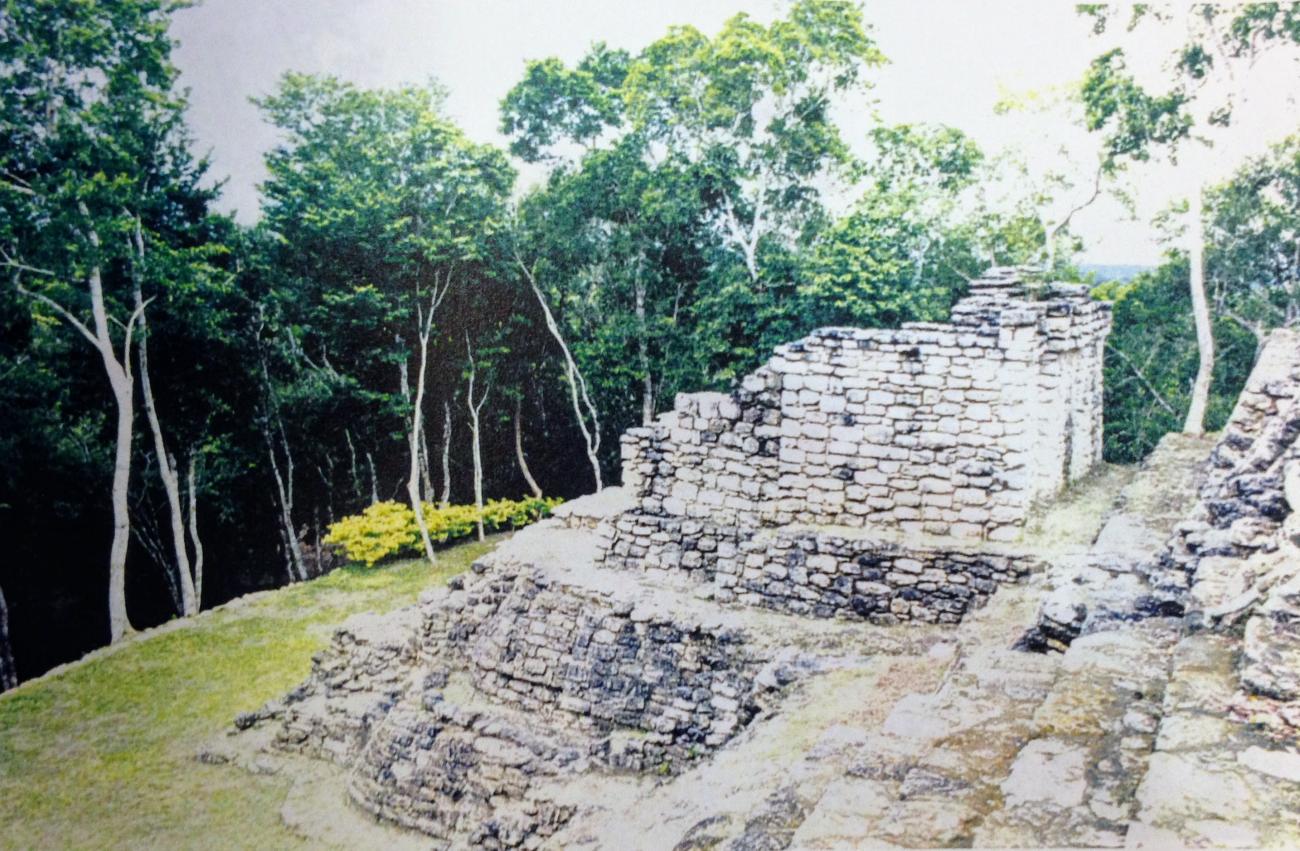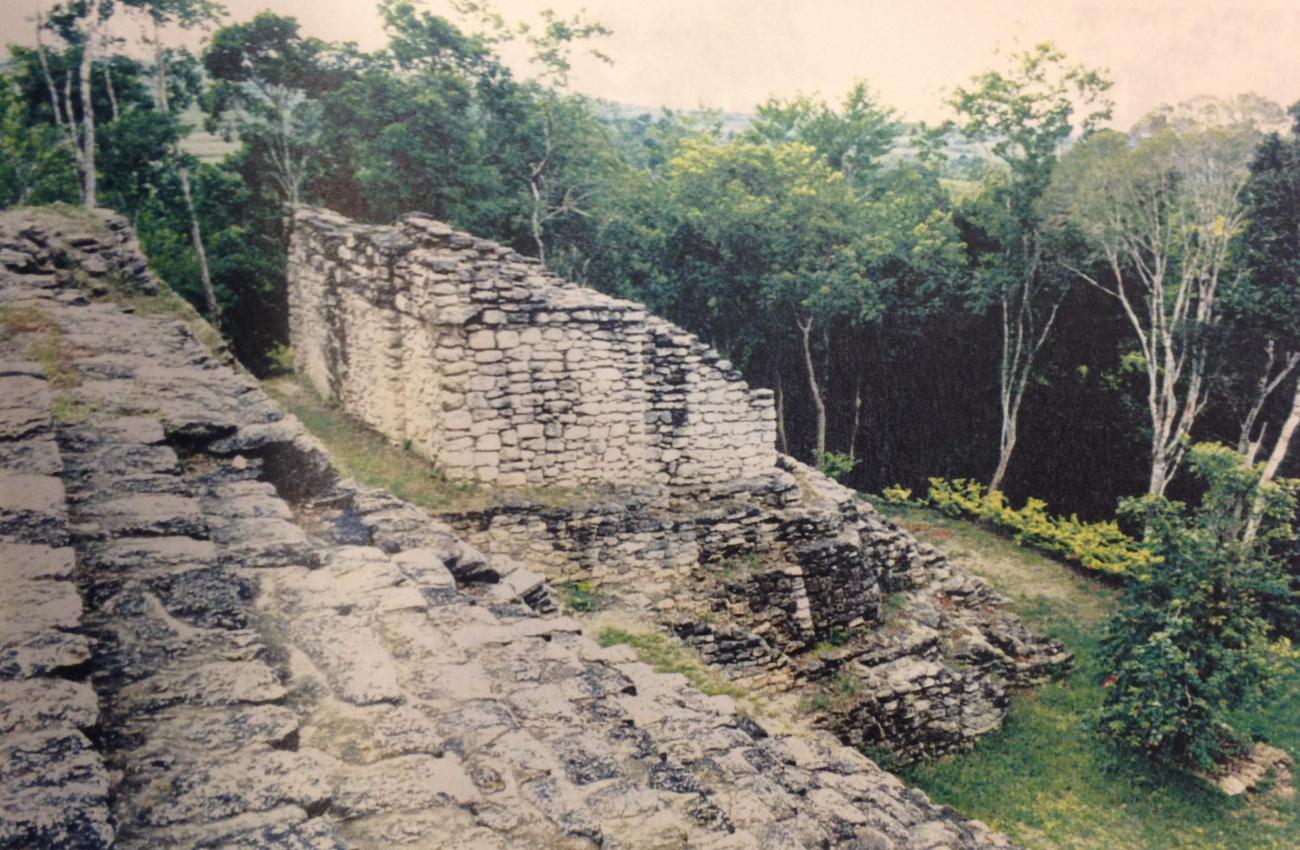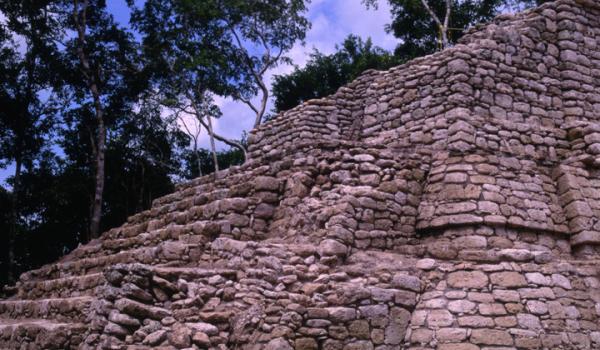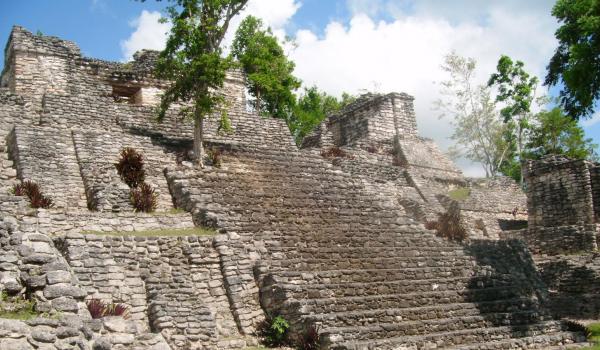It is a monument that experienced a vertiginous development during the Early Classic period. During that period it fulfilled a function related to the deification of the characters buried there, since the Mayan rulers acquired a divine status after their death.
Temple of the Jaguar: At the beginning of the 20th century, archaeologist Thomas Gann reported that the building was covered with a layer of white stucco inside and out. It had also been painted bright red but, except in certain niches, the color had disappeared. On the west side there was a portion of stucco modeled with the representation of the sign “Ahau”. Much of this has been lost. In the upper part of the structure it was possible to recognize a building with two galleries. The highest points of the construction corresponded to the remains of a crestería.
Two burials were found in it: one of an adolescent individual (11-13 years old), probably female; the skeleton was found in good condition, placed on 2 metates. The other is a multiple burial in which two people and a jaguar were found, as well as 3 plates, 4 cajetes, ear spools and a funerary mask.
This structure can be dated to the Early Classic (ca. 250-450 A.D.).
Temple of the Pericos: It presents four architectural phases in its southern façade, of which the final presentation only allows to see the last two, corresponding to the Early Classic (250-450 A.D.) and Late Classic (600-700 A.D.).
Temple of Saraguato
Temple of the Turtles: The building stands on a platform, under it were found two staggered bodies; it has two galleries and a single access opening. In the west side it presents a substructure in whose inferior molding a mask that conserves something of its stucco covering decorated in red can be appreciated.
It has three funerary chambers: in the first one, two incomplete dishes of the Balanza Negro type were recovered; in the second one, remains of a dish of the Aguila Naranja type were found; while in the last one, human bones were found inside a wrapping of textile material, as well as beads, pearls, the eye of a funerary mask and three jade earrings in the shape of turtle shells.
The building dates from the Early Classic.
Temple of the Glyphs: Two funerary chambers were found in it: in the largest, located in the center of the basement, bone remains were recovered suggesting the presence of at least two individuals; while in the second one only a long bone was found, polished and engraved with glyphic inscriptions.

